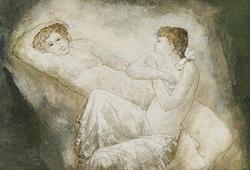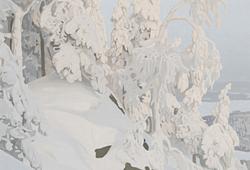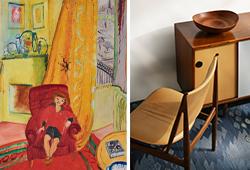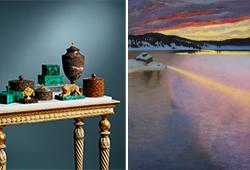Olle Baertling
"Artoa"
Signed Baertling and dated 1957 on verso. Canvas 180 x 92 cm.
Provenance
Theodor ”Teto” Ahrenberg Collection; Stockholms stads auktionsverk, ”Kvalitetsauktion” / ”Svensk konst ur direktör Theodor Ahrenbergs samling”, April 20 1966, lot 353.
Private collection, Sweden.
Exhibitions
Musée des Beaux-Arts, Liége, May - July, 1958.
More information
Every year, Olle Baertling's unique fascinates new art collectors who find his "open form" appealing and suggestive. Like many other artists he experienced resistance and for a long time he was known as "the controversial banker who tried to paint", despite the fact that he, unlike many contemporary artists, reached far beyond the borders of his homeland during his lifetime.
Baertling's painting developed in the 1940s from figurative towards the non-figurative. When the borders opened after the Second World War, Baertling, like many others, went to France. The 1950s were his most important decade. During the first years of the 1950s, he took longer and longer vacations from his banking job and traveled to Paris. There he got inspired by the new artistic winds at the Salon des Réalités Nouvelles and met with sought out artists such as André Lhote, Fernand Léger, Victor Vasarely, Richard Mortensen and Auguste Herbin. The latter became crucial for his continued development as an artist. Herbin introduced Baertling to the gallery owner Denise René, who immediately installed him in her "stable" of constructivists. Baertling abandoned the OP art that inspired him for a while and began to create in his very own style where triangles and diagonals became the main theme. Everything was methodically executed; and the "open form" is born. In the concept of "the open form", Baertling sought to depict space and movement through his geometric shapes that continue beyond the surface of the image.Lines and large color fields in black characterize his paintings, contrasted with "Baertling-white", a unique shade invented by the artist. Baertling preferred artificial colors that did not give associations to nature and believed that black was a magical color, both light, happy, and beautiful.
Artist
Olle Bærtling was born in Halmstad in Sweden and is most notable for his painting and sculpture. Bærtling studied like Bengt Lindström in Paris for André Lhote and Fernand Léger. His first exhibition took place in Stockholm in 1949. Bærtling works foremost in a geometric, non-figurative style, approaching his art as a scientist would his research. In 1956 Bærtling discovered his open form, the open trangle with sharp angles which express speed. When in 1956 he positioned the apex of the triangle beyond the boundaries of the frame, the canvas became merely a segment of an event occurring beyond our visual field. The sense of speed is emphasized by the colour, which gives the impression of higher velocities the closer to the triangle’s apex. Black outlines are strong characteristics of Bærtling’s art, while they may seem straight, they actually bend inwards towards the large fields, counteracting their outward pressure. Colour was also essential to Bærtling’s work, whereby it was imperative that they could not be found in nature and were not associated to any form or object. Thus Bærtling only utilised secondary colours: violet, orange, green, and Bærtling-white (a week green-tinted colour). His open form is most evident in the sculptures he made from 1958 onwards. Bærtling consistently delved into the interplay between colors and shapes, remaining unaffected by external artistic trends throughout his life. Today, we can see how artists such as Ann Edholm have been inspired by Bærtling's creations.
Read more






































